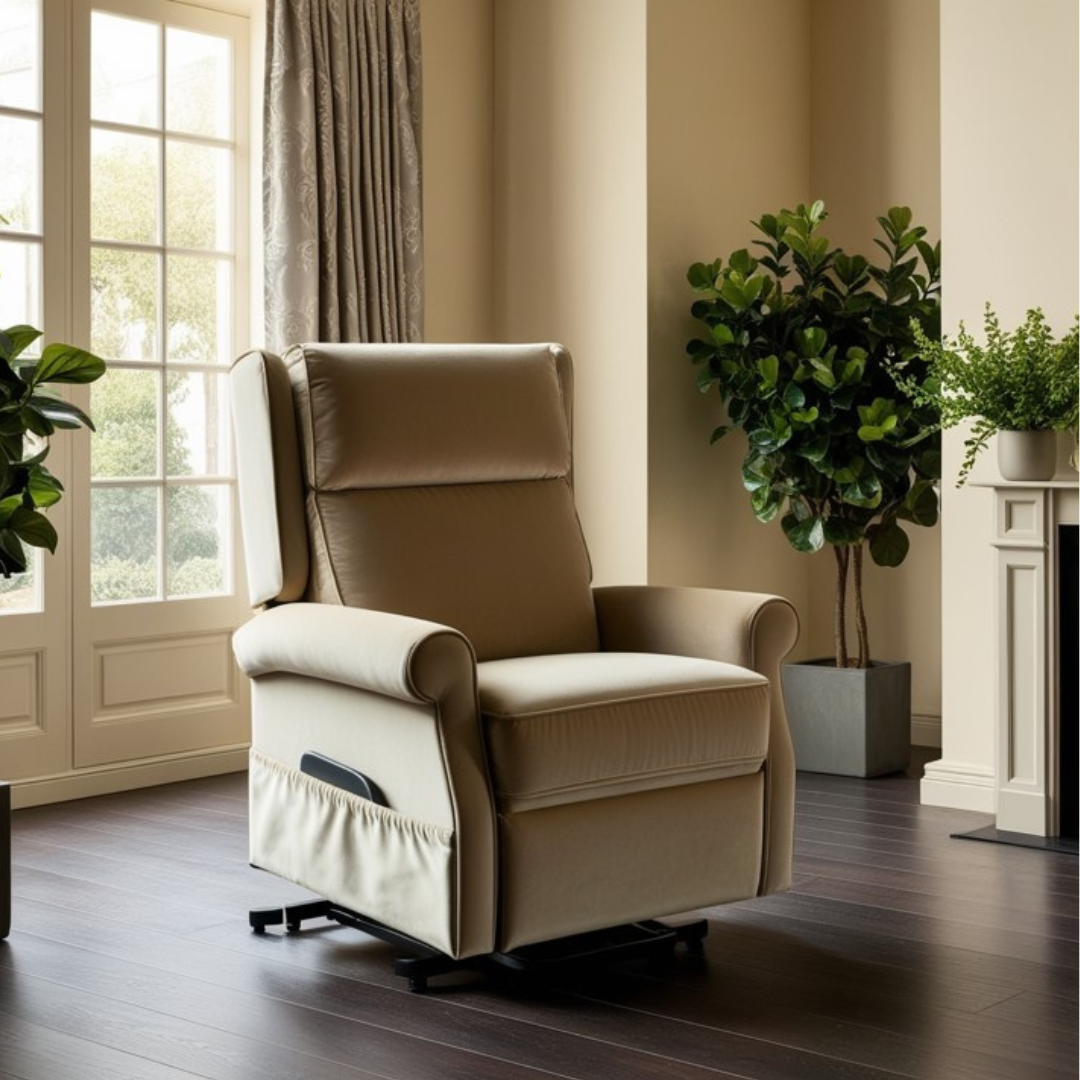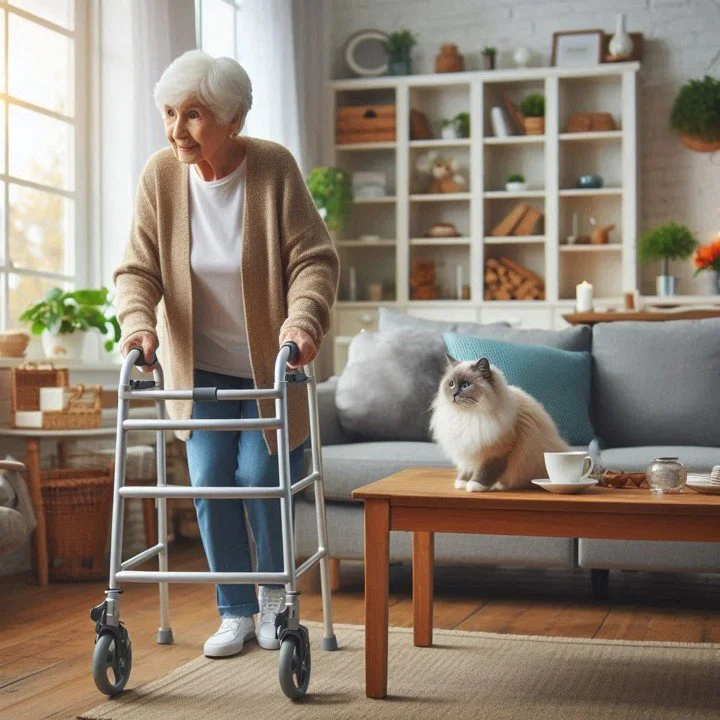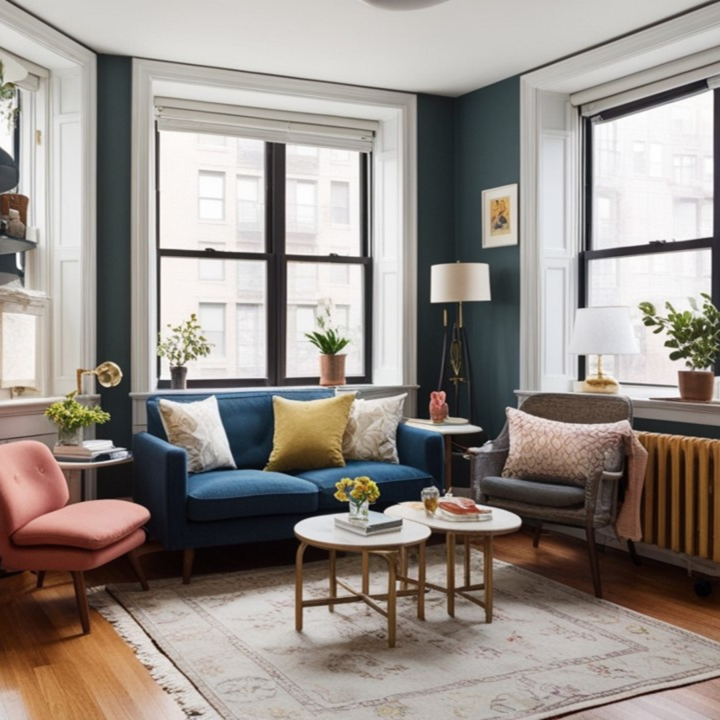It’s true that we all get older, and as we age, our mobility can also change, but that doesn’t mean style and comfort must fall by the wayside. In fact, with today’s contemporary furniture choices, you’re more than covered with designs that are functional and great looking!
Possibly one of the most important senior-friendly aspects of a home’s interiors is seating. That means chairs that offer the proper support, comfort, and accessibility. And the best part is these chairs can effortlessly blend into your home, without looking out of place with your style choices, and that’s the definition of form and function.
Today, we’ll look at how to design a home in the 21st century with chairs for old age so that your rooms are still beautiful and functional for your needs and the needs of elderly family members or guests.
The Needs for Elderly Friendly Chairs
Before we get into design ideas for chairs that are easy for older folks to use, it’s super important to really understand their needs.
Towfiqu barbhuiya
As we age, things like joint pain, and balance can affect our mobility, and getting in and out of low or unsupportive furniture can be tough. So, when you’re thinking about elderly-friendly chairs, here are some key points to keep in mind:
Proper Support: Chairs should have excellent lumbar and back support to help seniors maintain correct posture and avoid stress on their spine.
Ease of Use: Elderly folks should be able to sit down and get up without any hassle. That’s why it’s great to have chairs with adjustable seat heights, motorized reclines, and supportive armrests.
Cushioning and Comfort: Comfort is important, and supportive but firm chairs are particularly important for those who sit for long periods.
Stability: Their chairs should be made from sturdy and stable materials with wide bases. (It’s also a good choice to consider anti-slip features to prevent falls too.)
Functionality: Many chairs designed for seniors also have features like wheels for mobility, adjustable footrest, or even a built-in lift mechanism for standing up.
That’s why it’s important to understand how the right chair can really improve seniors’ lives, without sacrificing their preferred style.
1. Prioritizing Ergonomic Design
Senior friendly seating is driven by ergonomics. When choosing chairs, pick one that offers long-lasting support and comfort.
Лена Силантьева
High back, contoured seats and adjustable armrests on chairs are ergonomically designed to reduce pressure on joints. Features like these make it possible for seniors to sit for a long time without discomfort or pain.
These days, lots of manufacturers are making ergonomic chairs that look sleek and modern, with trendy upholstery to match. They fit right in with contemporary decor and provide all the practical benefits that older adults need.
2. Choosing the Right Materials
Go for durable, easy-to-clean covers that are all about comfort and longevity. Think about choices that are tough enough to handle everyday use but still feel soft and inviting.
Pick materials like leather, microfiber, and high-quality woven fabrics.
Think also about fabrics that are water resistant or treated for stain prevention to lessen the worry about spills or accidental mishaps.
For a chair that will be sat on for a long time, look for something breathable, because heat buildup can cause discomfort.
Tip: Don’t overlook chair frames made of wood or metal, because they’re great for adding stability and durability. For example, a modern wood frame chair with soft fabric is stylish and provides a solid and secure base for support.
3. Using Functional Chairs as Design Elements
The key to making elderly-friendly chairs a standout part of your decor is to think of them as a design element, not just an afterthought. Chairs with a minimalist vibe and sleek, neutral colors will blend with many design styles.
Skylar Kang
For example, if your living room is modern and has neutral tones, you should go with a recliner or accent chair in similar tones.
Clean lines and geometric patterns are a great match for today’s interiors, and you can add a bit of personality and color with pillows or throws, in a color that coordinates with your room.
In more eclectic or colorful spaces, chairs with bright upholstery or bold patterns can be the statement piece that brings the wow factor in.
4. Using Technology for Comfort & Convenience
As the name suggests, "assisting technology" has really come a long way, especially when it comes to making furniture more comfortable and functional for seniors.
More and more older adults are going for motorized recliners, lift chairs, and chairs with adjustable seat heights because they’re easy to use and help them stay independent.
Specifically, lift chairs are great for elderly people that have a tough time getting up from a seated position. The motorized mechanism raises the seat and helps the user to gently stand.
These features are super functional, and can be seamlessly woven into modern chair designs, keeping everything looking sleek and uncluttered.
5. Chairs that Fit in Multi-functional Spaces
Like most aspects of today’s interior design, multi-functional furniture is a hallmark of many homes, particularly in smaller homes and apartments where space is already tight. These chairs fit right into any space and serve multiple purposes, all while being designed with older users in mind.
For instance, a recliner can be a comfortable reading chair by day and a support chair at night.
When designing multi-functional spaces for older adults, consider putting chairs in spots for both social interaction and cozy comfort.
A chair by the window can become the perfect reading spot, while the same chair in the living room can be a great place to watch TV or spend some quality time with family.
(I say the same chair, because this is where the multi-function part comes into play: a chair that’s easy to move or has wheels can be very helpful to an older person in different rooms at home.)
6. Optimizing Chair Placement for Accessibility
Where you put the chairs is just as important as the chairs you choose. For older adults, making spaces functional means keeping pathways open and passable.
Place chairs near tables or shelves so seniors can easily reach things, like a cup of tea, for instance, without straining.
And don’t forget to leave enough room around the chair for someone using a walker or wheelchair to get by easily!
Since features like wheels make them easy to move, it’s important to place chairs where they can be moved around without blocking pathways or making it harder for them to navigate in and around the room.
To sum up, you don’t have to sacrifice style for elderly-friendly chairs. If you focus on ergonomic design, choose the right materials, and use some smart technology, you’ll create spaces that are both functional and beautiful.
Whether you’re putting together a cozy reading nook, a stylish living room, or a versatile multi-purpose area, senior-friendly chairs can bring a modern touch while providing the support and comfort that older folks need. With a bit of thoughtful planning, you can turn your home into a place where elderly family members or guests can enjoy oodles of style and comfort.
Read Next
Maximizing Small Spaces: Creative Interior Design Tips
Struggling with a small space? These creative tips will help you to make even the tiniest rooms feel larger and more inviting. From multi-functional furniture to clever storage solutions and the magic of natural light, this guide will help you transform your home into a stylish and unique home that reflects your unique personality.
Join the Fun!
If you enjoyed this post and you want to keep seeing my weekly blog, the best way to do that is to subscribe.
You can subscribe by downloading my 11 Secrets Only Designers Know to Make Your Space Rock. If you’re curious about how decorators and designers make a home look magazine ready, you’ll love taking a gander at these 11 secrets. You’ll learn how to style your room from the floor up and it will work for ANY space you have.
I write about small space design and decorating, sustainable furniture options, positive self care and a variety of do-it-yourself home décor.
I’d love to connect with you!
“Michael Helwig was top-notch, very professional and responsive to my needs. He allowed me time to explore ideas and try out a variety of combinations until we found the perfect fit. Michael provided detailed information and offered beautiful ideas to make my dream living room become a reality. The furniture he sourced has totally transformed my living room space. Everyone that has seen my new living room has one word, WOW! A special thank you to Michael for a wonderful experience.”
“Michael was very knowledgeable and guided us, with great patience and good humor, through the process of designing our dining room and helping us find the perfect sleeper sofa. He offered really helpful advice when we asked questions - which was often - but at no time did we ever feel pushed. He helped me when I felt like I couldn’t make one more decision. When my new furniture finally arrived I realized everything down to the pillows was perfect. I couldn’t be happier!”
Michael is Principal designer and blogger at Michael Helwig Interiors in beautiful Buffalo, New York. Since 2011, he’s a space planning expert, offering online interior e-design services for folks living in small homes, or for those with awkward and tricky layouts. He’s a frequent expert contributor to many National media publications and news outlets on topics related to decorating, interior design, diy projects, and more. Michael happily shares his experience to help folks avoid expensive mistakes and decorating disappointments. You can follow him on Pinterest, Instagram and Facebook @interiorsmh.
















